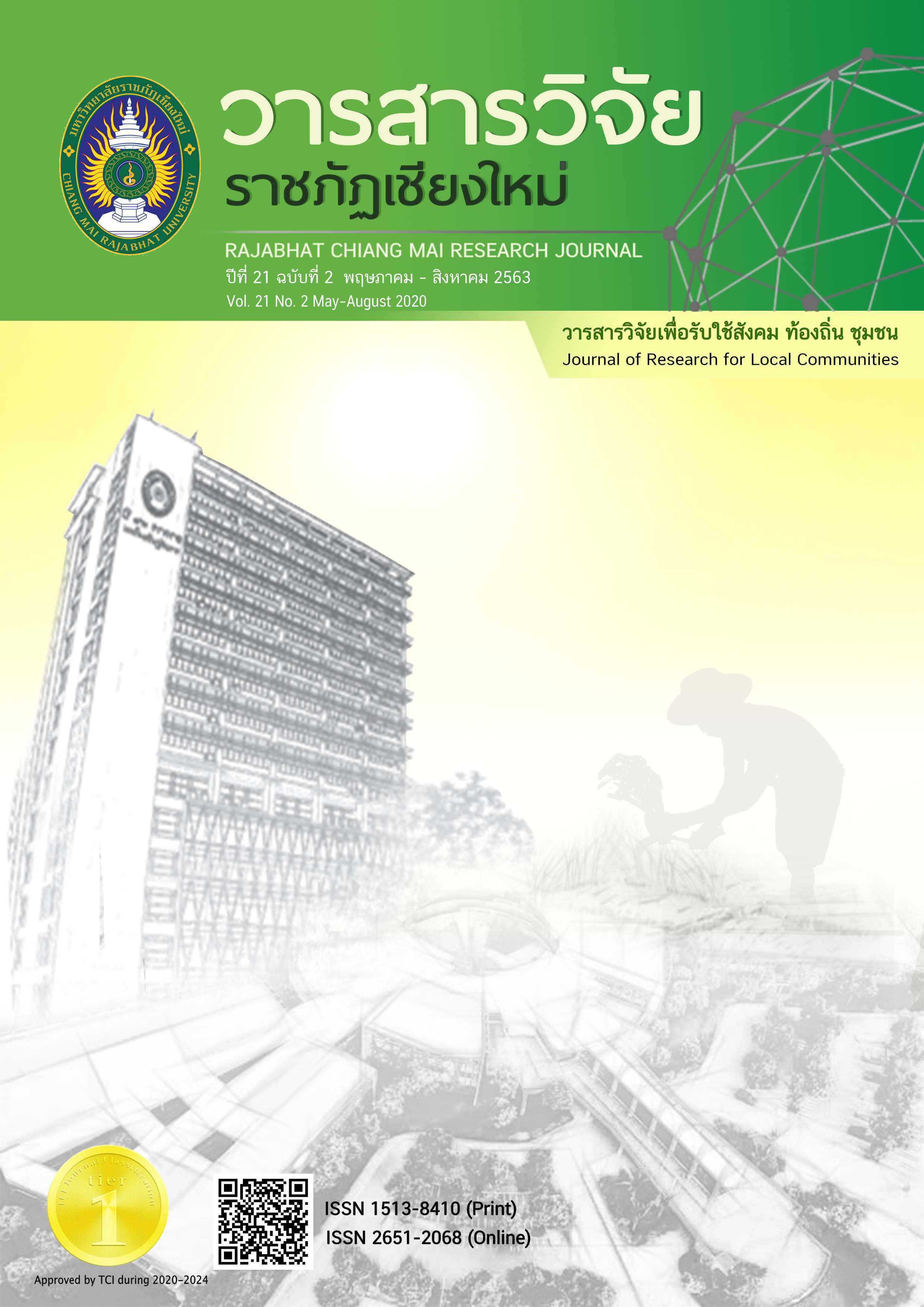Development of Thai Sensory Patterns Assessment Tool/TSPA for Children Aged 3 – 12 Years -School Version
DOI:
https://doi.org/10.14456/rcmrj.2020.235445Keywords:
TSPA, Thai sensory patterns, Low registration, Sensory seeking, Sensory sensitivity, Sensory avoiding, Assessment tool for childrenAbstract
The purpose of this study was to develop Thai sensory assessment tool for the Children Aged 3 – 12 Years/TSPA -School Version. The study also examined the assessment tool’s content validity internal consistency and intra – rater reliability. The sample were the 408 students who were studying in early childhood and grade 1 – 6 in Chiangmai primary education service area Office 1, using the multi-stage sampling. TSPA -School Version developed consists of 115 items. Using by classroom teachers recorded the frequency of children's behavior expressed into 6 categories: visual, auditory, olfactory and taste, vestibular, tactile, proprioceptive and 4 patterns, Low Registration, Sensory Seeking Sensory Sensitivity, and Sensory Avoiding. The Psychometric properties test showed that the index of item-objective congruence (IOC) was between 0.8 – 1.0. The Cronbach's alpha is equal to 0.97. The intra – rater reliability (ICC) was 0.96. These findings indicate that teachers can use TSPA-School Version to design or select activities of teaching and classroom environment accordingly. Moreover, the interaction between teachers, parents and multidisciplinary to help individuals help promote children's quality. To be recognized by the community and society further.
References
Chung, J. C. (2006). Measuring Sensory Processing Patterns of Older Chinese People: psychometric validation of the adult sensory profile. Aging Ment Health, 10(6), 648-55.
Cicchetti, D.V., & Sparrow, S.A. (1981). Developing Criteria for Establishing Interrater Reliability of Specific Items: Applications to Assessment of Adaptive Behavior. American Journal of Occupational Therapy, 86(2), 127-137.
Department of Children and Youth. (2017). Strategic Plan, Department of Children and Youth Affairs 2017-2021. Bangkok: Graphic Sundae. (In Thai)
Dunn, W. (2001). The Sensations of Everyday Life: Empirical, Theoretical, and Pragmatic Considerations, 2001 Eleanor Clarke Slagle Lecture. American Journal of Occupational Therapy, 55(6), 608–620.
Dunn, W. (2006). Sensory Profile School Companion: User’s Manual. San Antonio, TX: Psychological Corporation.
Glennon, T., Miller - Kuhaneck, H., Henry, D. A., Parham, L. D., & Ecker, C. (2007). Sensory processing measure manual. Los Angeles. CA: Western Psychological Services.
Goldstein, E. B. (2007). Sensation & perception. (7thed.). University of Pittsbergh, Thomson Wadsworth.
Kandel, E., Schwartz, J., & Jessell, T. (2001). Principles of Neural Science. New York: McGrow-Hill.
Kitpridaborisut, B. (2010). Techniques for Creating Data Collection Tools for Research. (7thed.). Bangkok: Sri Anan. (In Thai)
Olds, J. (1956). Pleasure Centers in the Brain. Scientific American, 195(4), 105-117.
Padilla, R. (2011). Effectiveness of Environment - Based Interventions for People with Alzheimer’s Disease and Related Dementias. American Journal of Occupational Therapy, 65(5), 514–522.
Pagliano, P. (2012). The Multisensory Handbook. USA and Canada: Taylor & Francis Group.
Portney, L.G., & Watkins, M.P. (2009). Foundations of Clinical Research: Applications to Practice (2nded.). Upper Saddle River: Pearson Education, Inc.
Sanwawi, A. (2014). Brain Learning Theory for Parents, Teachers and Administrators. (3rded.). Bangkok: Association for the Education of Young Children. (In Thai)
Downloads
Published
How to Cite
Issue
Section
License
1. Articles, information, content, images, etc published in the “Community and Social Development Journal” are copyrighted by the Community and Social Development Journal, Chiang Mai Rajabhat University. In order to properly distribute the articles through print and electronic media, the authors still hold the copyright for the published articles under the Creative Commons Attribution (CC BY) license, which allows the re-distribution of the articles in other sources. References must be made to the articles in the journal. The authors are responsible for requesting permission to reproduce copyrighted content from other sources.
2. The content of the articles appearing in the journal is the direct responsibility of the article authors. The editorial board of the journal does not necessarily agree with or share any responsibility.













